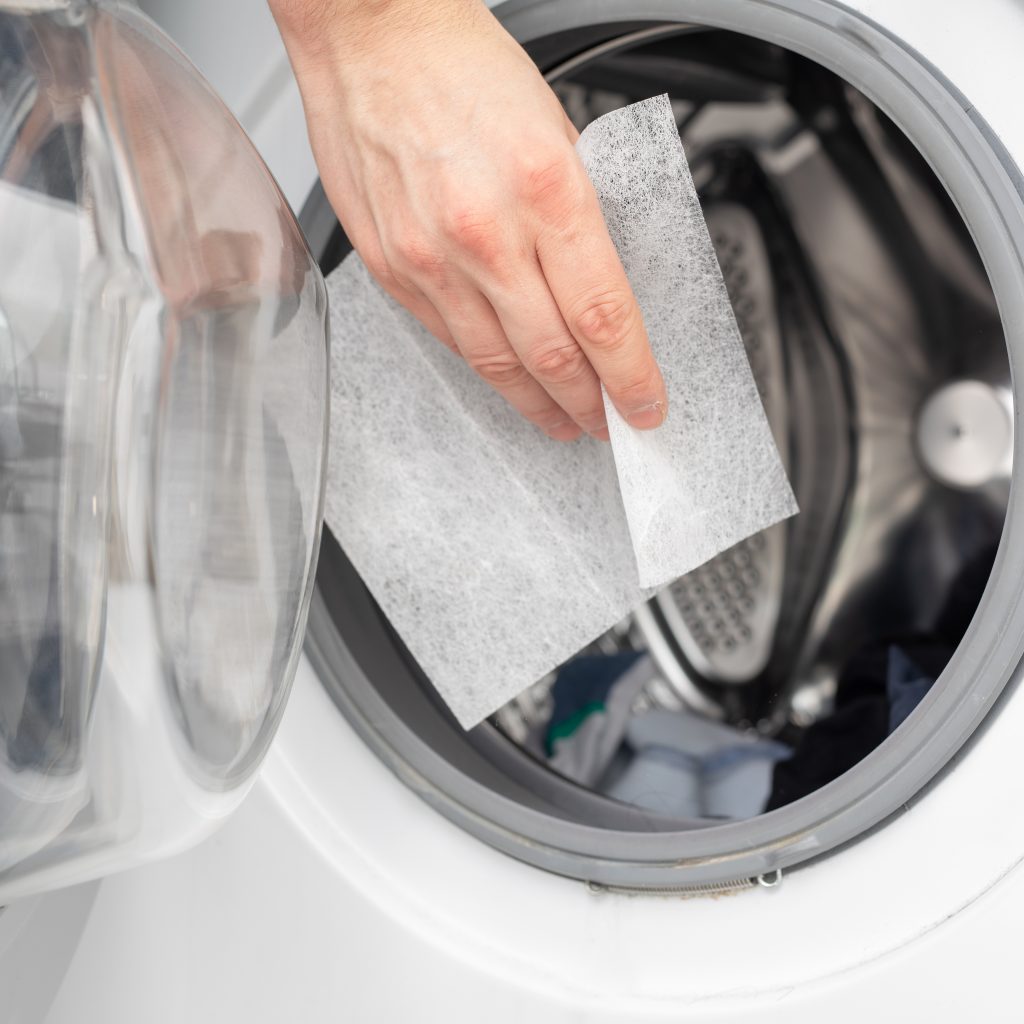Will Dried Ink in Dryer Get on Clothes: Avoid Ink Stains
Laundry mishaps can be frustrating, especially when unexpected stains ruin your favorite garments. One common concern among users is, “Will dried ink in dryer get on clothes?” This question arises when ink accidentally falls into the dryer, leaving many wondering about the potential consequences. In this comprehensive guide, we will explore the factors that determine whether dried ink can transfer onto clothes in the dryer, preventive measures to avoid such incidents, and effective solutions if it does happen. By understanding these aspects, you can ensure your laundry routine remains stain-free and your clothes stay in pristine condition.
How Ink Ends Up in the Dryer
Common Scenarios Leading to Ink in the Dryer
Will dried ink in dryer get on clothes? Accidents happen, and sometimes ink from pens, markers, or printing mistakes finds its way into the laundry. Common scenarios include:
- Pocket Mishaps: Forgotten pens or markers left in pockets can leak during the wash cycle.
- Printing Errors: If you use a printer near your laundry area, spilled ink can easily contaminate dryer surfaces.
- Kids’ Supplies: Children’s art projects using markers or pens can result in ink stains if not managed carefully.
The Nature of Dried Ink
Understanding the composition of dried ink is crucial in determining whether it can transfer to your clothes. Most inks consist of pigments or dyes suspended in a liquid solvent. Once the solvent evaporates, the pigments or dyes remain on surfaces. When dried ink is present in the dryer, its ability to transfer depends on factors like temperature, moisture, and agitation during the drying process.
Factors Influencing Ink Transfer in the Dryer
Temperature Settings
Dryers operate at varying temperatures, typically ranging from low to high heat. High temperatures can cause dried ink to soften, increasing the likelihood of it transferring onto fabrics. Lower temperatures may not provide enough heat to melt the ink, reducing the risk of stains.
Moisture Levels
The presence of moisture in the dryer can affect ink transfer. If clothes are damp or if there is residual moisture from the wash cycle, the ink may become more pliable and adhere to fabrics more easily.
Agitation and Movement
Dryers tumble clothes to ensure even drying. This constant movement can cause dried ink to rub against different garments, potentially leading to the transfer of ink particles onto fabrics.
Type of Fabric
The material of your clothes plays a role in ink transfer. Porous fabrics like cotton or linen can absorb ink more readily than non-porous materials like polyester, making them more susceptible to stains.
Preventing Ink Transfer in the Dryer
Inspect and Clean Pockets Thoroughly
Before placing clothes in the washing machine, always check and double-check pockets for pens, markers, or any other items containing ink. Emptying and inspecting pockets can prevent accidental ink spills in both the washer and dryer.
Use Protective Laundry Bags
For delicate items or clothes with embellishments that may contain ink markers, consider using protective laundry bags. These bags can contain any accidental spills, minimizing the risk of ink spreading to other garments.
Establish a Dedicated Cleaning Area
If you use markers or pens frequently, designate a specific area for their use, particularly away from your laundry area. This separation reduces the chances of accidental ink spills contaminating your dryer.
Regular Dryer Maintenance
Regular maintenance is essential in preventing ink buildup. Regularly wipe down the interior of the dryer, including the drum and lint trap areas, to remove any ink residues that could transfer to your clothes.
What to Do If Ink Transfers to Clothes in the Dryer
Act Quickly to Treat Stains
If you discover ink stains on your clothes after drying, it’s important to act quickly. Fresh stains are easier to remove than dried ones. Start by blotting the stain gently with a clean cloth to absorb any excess ink.
Choose the Right Stain Remover
Select a stain remover suitable for the type of fabric and the nature of the ink stain. For most ink stains, alcohol-based cleaners, such as isopropyl alcohol or hand sanitizer, can effectively break down and lift the ink from the fabric fibers.
Follow Proper Stain Removal Techniques
- Test for Colorfastness: Before applying any stain remover, test it on a small, inconspicuous area of the garment to ensure it doesn’t cause discoloration or damage.
- Apply the Stain Remover: Dab the chosen cleaner onto the ink stain using a cotton ball or clean cloth. Avoid rubbing, as this can spread the ink further into the fabric.
- Let It Sit: Allow the remover to penetrate the stain for at least 10-15 minutes, giving it time to break down the ink.
- Rinse Thoroughly: After treating the stain, rinse the area with cold water to remove the cleaner and loosened ink.
- Launder as Usual: Wash the garment following the care instructions, preferably in the warmest water safe for the fabric. Check the stain before drying; if it’s still visible, repeat the treatment process.
Consider Professional Cleaning
For stubborn ink stains or delicate fabrics that require special care, professional cleaning services may be the best option. Professional cleaners have access to specialized treatments that can effectively remove ink without damaging the fabric.
Preventative Measures: Long-Term Solutions
Educate Household Members
Ensure that everyone in the household understands the importance of checking pockets and handling ink-containing items carefully. Education can significantly reduce the occurrence of ink-related laundry issues.
Store Ink Products Safely
Keep pens, markers, and other ink products stored securely in designated areas to prevent accidental spills near laundry areas. Using containers with lids can also help contain any leaks or leaks.
Implement a Laundry Routine Checklist
Develop a checklist for your laundry routine that includes steps like emptying pockets, inspecting clothes, and cleaning the dryer. Following a consistent routine can help catch potential issues before they escalate.
Use Sealable Containers for Markers and Pens
Storing ink products in sealable containers minimizes the chances of accidental leaks, especially if they are transported near laundry areas or washing machines.
Understanding the Science Behind Ink Transfer
Ink Composition and Behavior in Heat
Inks are composed of pigments or dyes suspended in solvents. When exposed to heat in the dryer, the solvent evaporates, leaving behind the pigment or dye. High heat can cause these pigments to soften and adhere more easily to fabrics, increasing the risk of transfer.
Fabric Porosity and Absorption
Different fabrics have varying levels of porosity, which affects how easily they absorb substances like ink. Natural fibers like cotton are more porous and tend to absorb ink more readily compared to synthetic fibers such as polyester, which are less absorbent and thus less susceptible to ink transfer.
Mechanical Agitation’s Role in Stain Transfer
The tumbling action of the dryer creates friction between clothes, facilitating the transfer of loose particles like ink. This mechanical agitation can dislodge dried ink from surfaces and embed it into the fibers of other garments.
Alternative Drying Methods to Prevent Ink Stains
Air Drying Clothes
Air drying your clothes, either by hanging them or using drying racks, eliminates the risk of heat-related ink transfer. This method is especially beneficial for delicate fabrics prone to staining.
Using Lower Heat Settings
If using a dryer is necessary, opt for lower heat settings to reduce the likelihood of ink transfer. Lower temperatures may not soften the ink sufficiently to cause stains.
Drying Smaller Loads
Drying smaller loads can reduce agitation and allow for more careful monitoring of garments, making it easier to identify and address any potential ink issues before they result in widespread stains.
Identifying and Removing Ink Residues in the Dryer
Thorough Cleaning Procedures
Regularly cleaning your dryer can prevent ink buildup and minimize the risk of transfer. Follow these steps to ensure your dryer remains ink-free:
- Disconnect the Dryer: Always unplug the dryer before cleaning to ensure safety.
- Wipe the Drum: Use a damp cloth with mild detergent to wipe the interior drum, removing any visible ink residues.
- Clean the Lint Trap: Remove and clean the lint trap, ensuring no ink particles are trapped within.
- Check Ventilation System: Inspect and clean the dryer’s ventilation system to remove any ink buildup that could be recirculated onto clothes.
Using Vinegar and Baking Soda Solutions
For stubborn ink residues, a mixture of vinegar and baking soda can be effective. Apply the solution to the affected areas, let it sit for a few minutes, and then wipe clean with a damp cloth. This natural cleaning method helps break down ink without using harsh chemicals.
When to Seek Professional Help
Persistent Stains Despite DIY Efforts
If ink stains persist despite your best efforts, it may be time to consult a professional cleaner. Professionals have access to advanced stain removal techniques and products that can tackle even the most stubborn ink marks.
Handling Delicate or Valuable Fabrics
For delicate or valuable garments, professional cleaning is often the safest option. Attempting DIY methods on such fabrics can risk damage, whereas professionals can ensure effective stain removal without compromising the integrity of the fabric.
Preventing Future Ink-Related Laundry Issues
Implementing Organizational Systems
Organizing your laundry area can help prevent ink accidents. Designate specific spots for pens and markers away from your laundry machines, reducing the chance of accidental spills.
Regularly Inspecting Laundry Items Before Washing
Make it a habit to inspect clothes for any items containing ink before washing. This proactive approach can catch potential ink sources before they contaminate your laundry.
Investing in Quality Laundry Detergents and Additives
Using high-quality laundry detergents and additives can enhance your stain removal efforts. Some detergents are specifically formulated to tackle ink and other tough stains, providing an extra layer of protection for your clothes.
 Conclusion
Conclusion
In conclusion, the question “Will dried ink in dryer get on clothes?” is a valid concern that can impact your laundry routine. The transfer of dried ink to clothes depends on various factors, including temperature settings, moisture levels, agitation, and fabric types. By implementing preventive measures such as thorough pocket inspections, maintaining a clean dryer, and using protective laundry bags, you can significantly reduce the risk of ink stains on your clothes.
However, if ink does transfer, acting promptly with appropriate stain removal techniques can help salvage your garments. Understanding the science behind ink transfer and adopting alternative drying methods like air drying can further safeguard your clothes from unwanted stains. Ultimately, staying vigilant and maintaining an organized laundry environment are key to ensuring that dried ink in the dryer does not get on your clothes, keeping your wardrobe fresh and stain-free.





